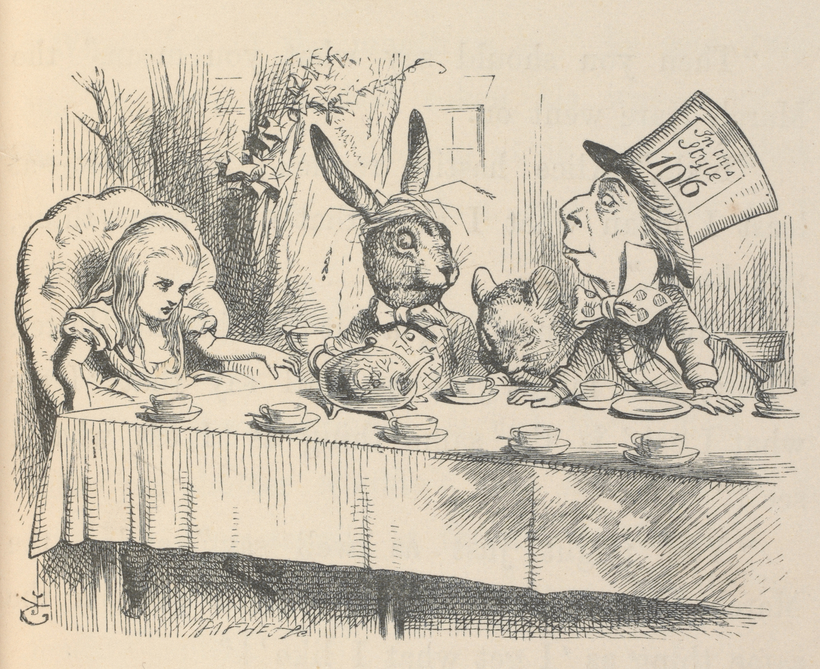If you fell down a rabbit hole and suddenly found yourself in a life-or-death croquet match with the Queen of Hearts, would you even know the rules?
Fortunately Alice Liddell, immortalized by Charles Dodgson in the eponymous book about her adventures in Wonderland, did. Rules, reason, routine, and good manners governed young Alice’s life at the Oxford college of Christ Church, where her father was dean from 1855 to 1891.

Dodgson, a young mathematics lecturer, librarian, and—most importantly for Alice—next-door neighbor of the Liddells, made a fantastic addition to the life of this precocious seven-year-old. During the summer of 1862, in the synergy between Dodgson’s brilliant mind and Alice’s demanding curiosity, a series of stories imagining a journey underground to “Wonderland” was born.
Alice was so enchanted by the tales that she insisted that Dodgson write them down. He presented her with a handwritten copy for Christmas in 1864. This slim volume is situated just left of the entrance to “Alice: Curiouser and Curiouser,” at London’s V&A.
Since the publication of the original manuscript of Alice’s Adventures in Wonderland, in 1865—which appeared with the pseudonym Lewis Carroll—and its sequel, Through the Looking Glass (1871), the books have never been out of print. Dodgson, a shy perfectionist, worked closely with John Tenniel, a well-known illustrator for Punch magazine. In delicate pencil sketches, Tenniel gave unforgettable form to the perpetually late White Rabbit, mischievous Cheshire Cat, and incredulous Alice.

V&A senior curator of theater and performance Kate Bailey, who organized “Curiouser and Curiouser,” describes Alice’s Adventures in Wonderland as a “guidebook for self-discovery and experimentation,” and an enduring force that continues to exert the powerful charm it once held over Alice. The book has also been a constant source of inspiration for artists through the ages. In 1928, André Breton evoked Alice in relation to Picasso’s Cubism, writing that “everyone has the power to accompany an ever-more beautiful Alice to Wonderland.” The book and its heroine became a rich source of inspiration for Surrealist artists, including Max Ernst, whose 1941 portrait of Alice is on view; other works are by Edward Burra, John Armstrong, and Marion Adnams.

The counterculture of the 1960s found Alice’s adventures equally irresistible. In 1967, Jefferson Airplane debuted “White Rabbit.” In 1968, Yayoi Kusama was creating “nude happenings” at the Alice statue in Central Park, while the company East Totem West produced an “at-home” version, complete with Cheshire Cat psychedelic posters. In 1969, Salvador Dalí illustrated a new edition of the book.

Alice is now leaping into virtual reality with the V&A’s show, which features a digital component. Visitors can also play a version of hedgehog croquet with the Queen of Hearts in a glorious rose garden under the façade of the newly reopened museum. With rooms dedicated to fashion and costumes, the Mad Hatter’s tea party, and a Through the Looking Glass mirrored section complete with trippy floor designs, there is plenty of psychedelia to be found. Chef Heston Blumenthal has even created a dissolving pocket watch that turns into mock turtle soup.
Do say, Is it me or did that cat just say something? Try not to say, Are you coming up yet? —Sarah Hyde


 Discover
Discover